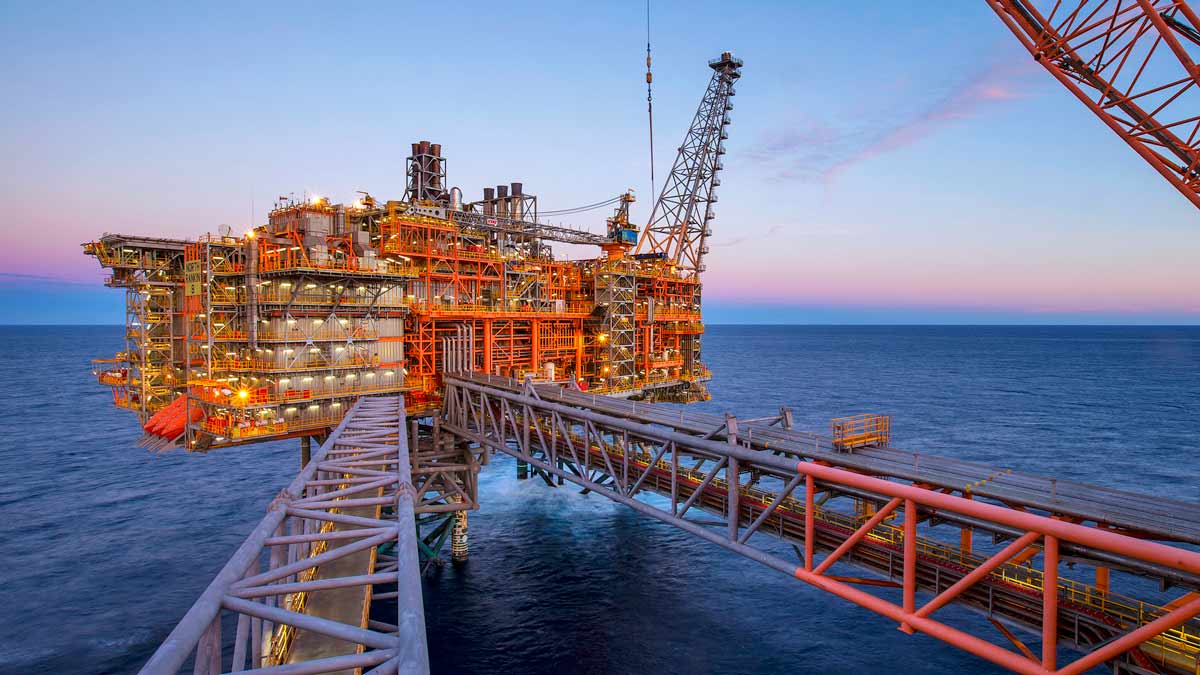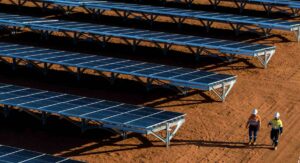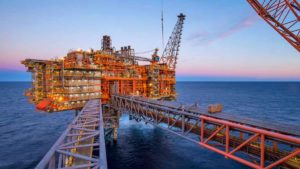Woodside Energy and its partners are looking at a carbon gas bill of up to $63 billion by 2050 under new Safeguard Mechanism rules, according to a new report from Climate Energy Finance (CEF).
This compares to the company’s market capitalisation is $64 billion.
The reformed Safeguard Mechanism requires that Scope 1 emissions from Woodside’s two existing LNG processing facilities for the North-West Shelf (NWS) and Pluto fall by 4.9 per cent every year, while the two proposed gas fields must be net zero emissions from the start.
“We project that the cumulative liability of Woodside and partners’ Burrup Hub project to 2050 is between $28 billion to $63 billion (nominal, not NPV), with Woodside’s share approximately 40 per cent. Most costly are the ageing NWS facilities and the planned Browse expansion,” said Tim Buckley, CEF director and author of the report.
“This is a clear commercial signal for Woodside to invest in decarbonisation.”
The lower end of the bill is based on a $45 per tonne (/t) opening carbon price, with the invoices for existing operations starting at $18 million next year and rising to a cumulative $19 billion by 2050. New facilities will add the other $9 billion.
The higher invoice is based on a $75/t carbon price. The initial bill for existing facilities starts at $31 million next year, rising to $36 billion in 2050. New facilities will cost $26 billion by 2050.
The Safeguard Mechanism reforms kick in from July this year.
Pressure is on for CCS cure
Options for decarbonisation include replacing on-site baseload gas power with renewables and storage, but Woodside has committed to carbon capture and storage (CCS) and the impending carbon bill will put pressure on the company to prove it can make the technology work.
Woodside is part of two joint investigations into CCS, one led by Exxon-Mobil for the Gippsland Basin gas fields and one for a multi-user facility at Karratha.
To date, CCS has not worked at the scale Woodside needs it to to decarbonise its proposed and existing projects.
Chevron’s Gorgon gas CCS project has consistently under-performed since inception and was only able to run at half capacity in 2020-21. The failure to hit its target resulted in a $40 million carbon bill for Chevron in 2020-21.
“A high price on carbon provides the financial case for geological storage of carbon, and in Australia we now have the policy architecture in place for this,” Buckley says.
“In 2021, Santos publicly stated that a A$70/tonne carbon price by 2030 would provide it with an approximate 20 per cent internal rate of return on its Moomba CCS project, making the project economic.
“With global prices currently sitting at US$75/t (A$110) and the Australian price set to reach A$100/t by 2030, we may now – with domestic decarbonisation, policy certainty and the SGM providing the necessary legislative legal carrot and stick – find out whether or not the gas giants, Woodside included, can make CCS work consistently and at scale.”
Carbon might kill Browse
Woodside and its partners, Shell, BP, the MIMI joint venture between Mitsubishi and Mitsui and PetroChina, have struggled to find a suitable plan for the $30 billion Browse gas field in the Timor Sea even without a carbon disincentive.
Previous ideas for development included building a new processing plant at James Price Point in the Kimberley, and a floating LNG plant.
The latest plan is to pipe the gas to the ageing NWS processing plant. That will require the life of that site to be extended from 2036 to 2070, at an annual carbon cost of between $290 million to $581 million in 2035 to $524 million to $1 billion in 2040.
But carbon emissions are the biggest problem for that project, Credit Suisse analyst Saul Kavonic told the AFR last year. He said CCS was critical to getting the project off the ground as it couldn’t rely solely on offsets.
This is because paying for carbon credits to offset emissions will become more and more expensive. Under the Safeguard Mechanism, the carbon price is set to rise by consumer price index (CPI) inflation plus 2 per cent annually and the number of free permits reduce by 5 per cent every year.
“For the planned expansion into the Browse reservoir, which is significantly more polluting than Scarborough, Woodside will need to invest heavily in reducing the flaring/venting of excess CO2 either through CCS or offsetting its carbon emissions, which will become increasingly costly,” Buckley says.
“Extending the life of the NWS facility from 2036 to 2070 to accommodate this will be increasingly liable to emissions penalties as decarbonisation regulation ramps up.”
The Australian Conservation Foundation is fighting the $17 billion Scarborough project in the Federal Court, saying it should be assessed under national environment laws due to its overall heating impact on the Great Barrier Reef.
A landmark Federal Court ruling overturning approvals for Santos’ Barossa gas project off the coast of the Northern Territory is also likely to add further delays to the Scarborough Project, Woodside CEO Meg O’Neill said last year.
The shareholders are revolting
Woodside is facing a shareholder insurrection over the company’s climate track record at its annual general meeting on 28 April. Proxy advisors are pitching for no votes against the rel-election of directors Ian Macfarlane, Larry Archibald and Goh Swee Chen, and the remuneration report.
Alongside the Australasian Centre for Corporate Responsibility, Vision Super and Betashares, investors want the board to be accountable for the lack of a credible climate strategy.
Last year, 49 per cent of shareholders voted against Woodside’s climate report. They won’t get to vote on this year’s report, so no votes against board members and the remuneration report have become proxies.
Investors want to see new directors on the board who have energy transition and climate science experience, and an energy transition action strategy to deliver on Scope 1-3 net zero emissions by 2050.
According to Climate Analytics, Woodside’s Scope 3 emissions will account for 1 per cent of global emissions by 2050.










